Thursday 11th August

Berlin
We left Vienna at 10am, we had an unpleasant surprise when we realised that we were supposed to have seat reservations, and we didn’t. In Italy, you had to have seat reservations, but in Austria and Germany, you also had to have them but the Interrail app didn’t TELL you had had to have them, or link to where you could book them.
Rail in Italy so far is the easiest to navigate that we’ve found in Europe – and 1st class tickets are actually worthwhile – complete with complementary prosecco and espresso machine on wheels – a-a-amazing.
Once we discovered where and how to book our seats we discovered, to our horror, that on all our planned journeys there were no seats available, so we’d be seat hopping on a 9 hour journey from Berlin to Frankfurt, then from Frankfurt to Brussels. This would definitely not be a relaxing way to travel, so we changed our plans a bit, opting out of meeting up with some family friends in Frankfurt (unfortunately!) and decided instead for an overnight train to Brussels via Koln, (Cologne) where we could book a seat on at least the first half of the leg.
Jared, the legend that he is, managed to figure out how to get us seat reservations from Nuremberg to Berlin, as ones from Vienna to Berlin were sold out. We discovered that our first class tickets were in fact in the first class section on the train that would be being added to our train in Nuremberg. We soaked up some sunshine and fresh air while we waited for the delayed train to join ours.
[Travel tip: the restaurant car is a really good hack for unallocated seats, but you need to buy at least a drink.].
Germany had a special on train passes – €9 for the whole month – so this contributed to the trains being full-to-overflowing. There were people standing, there were people sitting in the aisles and in every door opening on every carriage, using bags as seats, so not having allocated seats was quite a big deal.
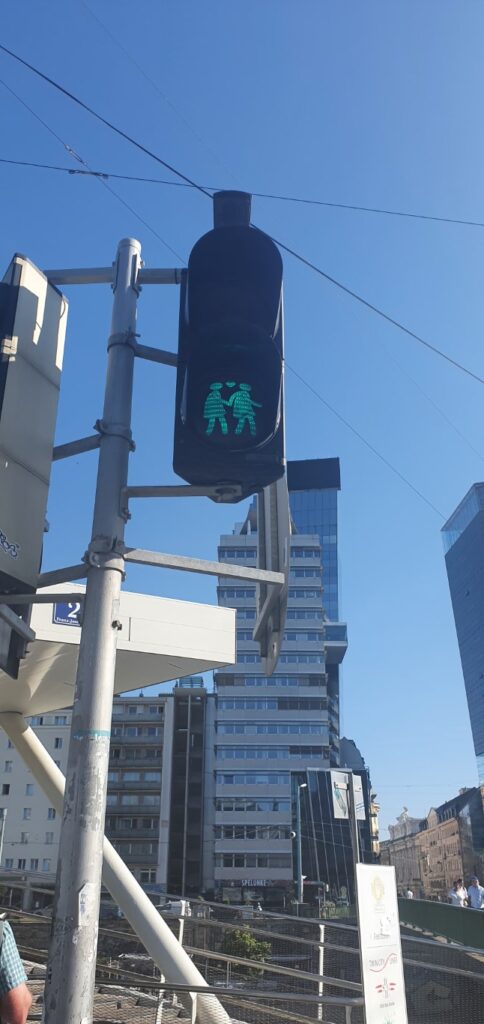
We finally arrived in Berlin, and eventually figured out how to escape the rabbit warren of Berlin HBF (main train station) – a multi-floored escape room designed to baffle sleepy tourists. We couldn’t find the bus stop for the bus that would directly take us to our accommodation, nor a train platform that would take us there, so eventually took an underground to Potsdamer Platz where we were staying.
Because our train was delayed, our friends had already dined without us, and so we grabbed some Indian from the place emblazoned with signs dubbing it the ‘best vegetarian restaurant in the world’.
I’d like to contest this claim. I didn’t think it was possible to have bad Indian food, but they somehow managed it.
It tasted fine, but my aloo paneer was more like a korma than the vindaloo vibe I’m used to – highly disappointing, but a very apt introduction to German food. (Apparently we’re in a minority with this opinion, according to the internet, anyway, not great for us.)
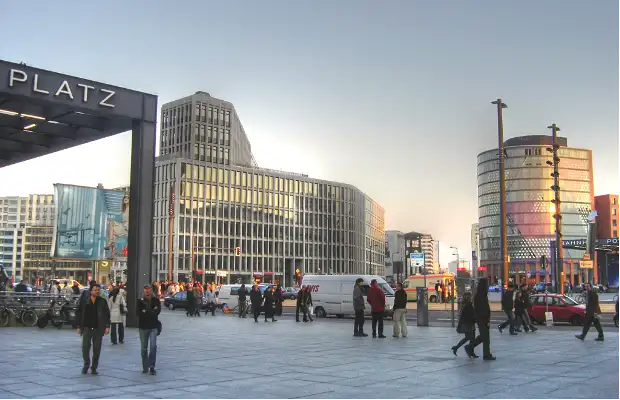
Friday 12th August
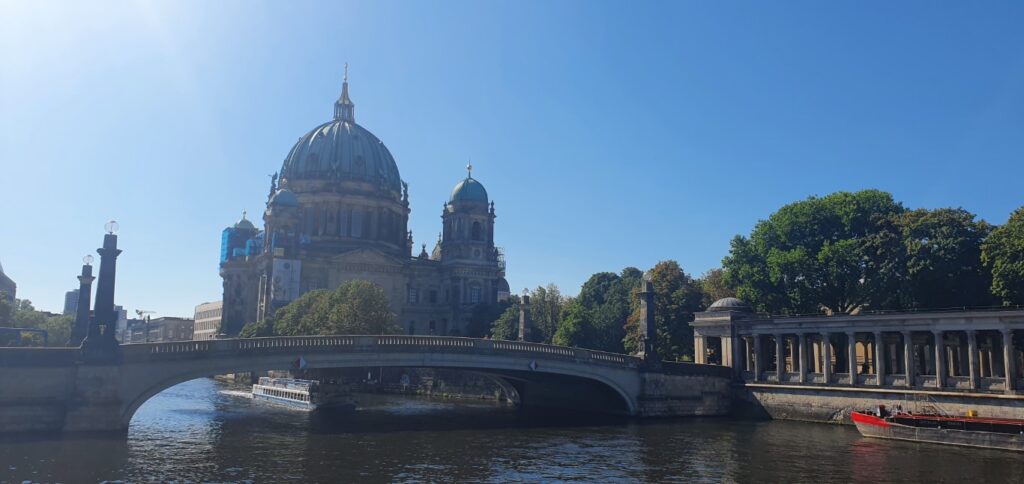
Friday started with a walking tour, where our guide Scott (the Scot), led us from Neue Promenade across the Spree river, where the Berlin wall used to divide the city, through ‘Museum Island’, past Bebelplatz, where Hitler gave rousing speeches surrounded by Nazi flags, down Unter den Linden past many beautiful buildings, a very profound memorial of a couple that sent their 17 year old son off to war for him to die in the trenches 10 days later, past a bunch of embassies, to the Brandenburg gate, where we had a lunch break.
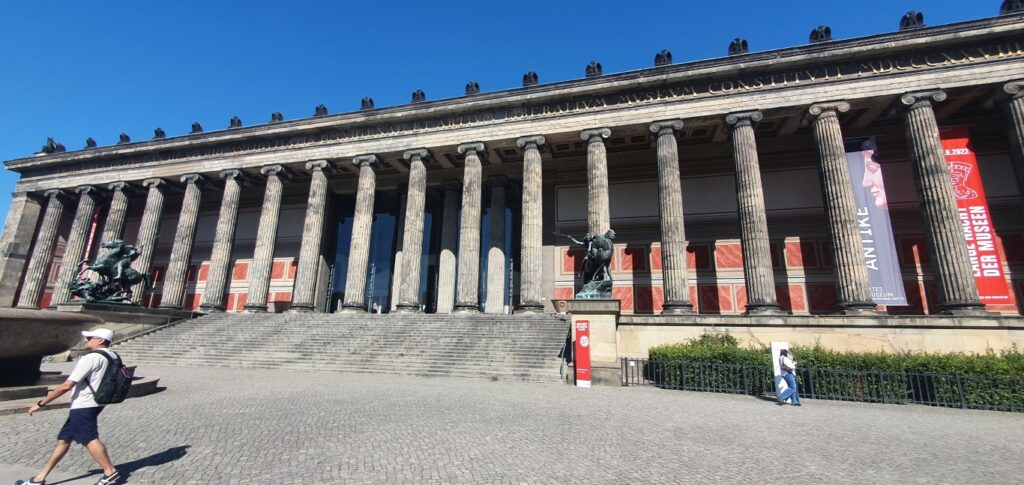

We feasted on paninis, beer and fresh orange juice, and tried to eat and drink it before we were accosted further by wasps, rejoining our group after a short break.

We walked through the Brandenburg gate, and continued on to the Holocaust memorial. The memorial takes up a city block, and is a conglomeration of squares, almost like a mini city, divided by straight lines. Towards the middle of the square, the ground becomes increasingly undulating, and the blocks tower over one’s head. It is very disconcerting, and of the 25 or so people in our group I was the first one out, because by the time I got to the midpoint my anxiety was kicking in, and I was somewhere between nausea and panic-attack.
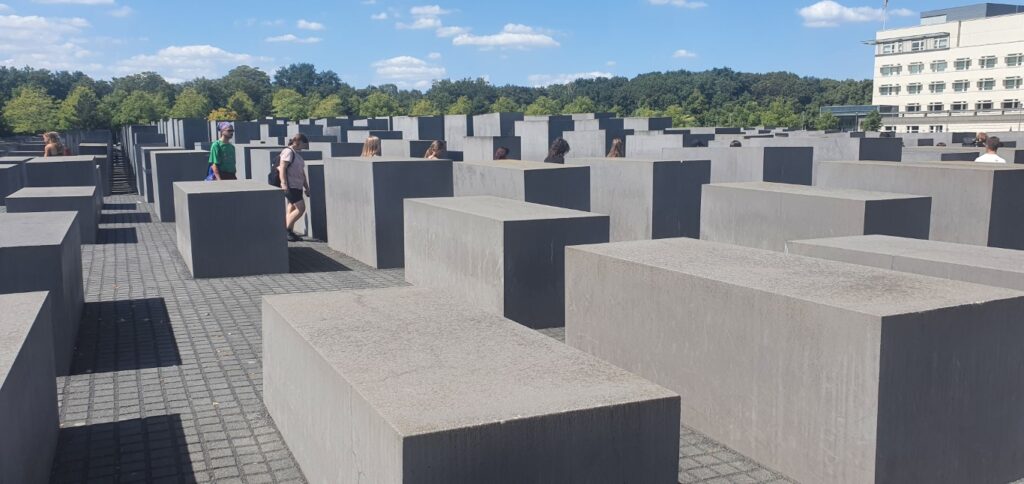
I continued to feel sick for an hour or so afterwards.
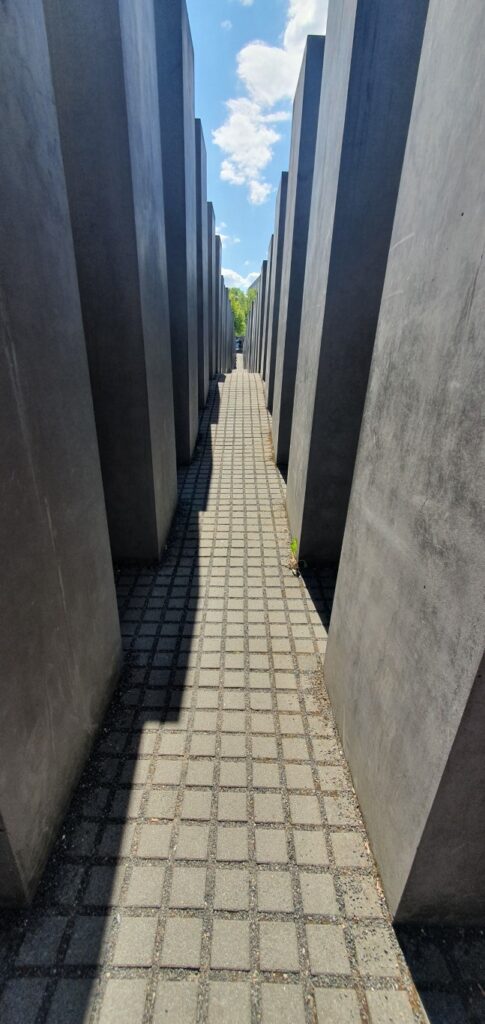
Scott explained that this memorial was supposed to do that to you. It was designed to tap into the somatic senses and disorient and confuse the body on a visceral level, and that each person is supposed to take their own meaning from that. Turns out I’m quite susceptible to this.
Jared felt anxious, claustrophobic, isolated, and discombobulated. You couldn’t see things coming, or see around the corners, there was undulating ground, walking on a slope, buildings of different heights, and they increase in size. They’re also slightly askew, enough for your body to tell but not your eye. The lines in between the blocks were straight – thankfully – if they weren’t, it would’ve been the worst maze in the world.
I liked the notion that although it was scary in the middle, you could always see out to the edge – you knew there was a way out. I imagine that is significantly more hope than a lot of those who were victims of the holocaust ever had.
What I took from it was how scary it must’ve been to have the world turn on you, and what you thought was solid ground become unsteady underneath your feet, but that even though we can create these horrible systems that can make people feel so powerless and confused, there’s also a way out. There’s also a way to change these systems, and we can follow a different path out to hope and a better life.
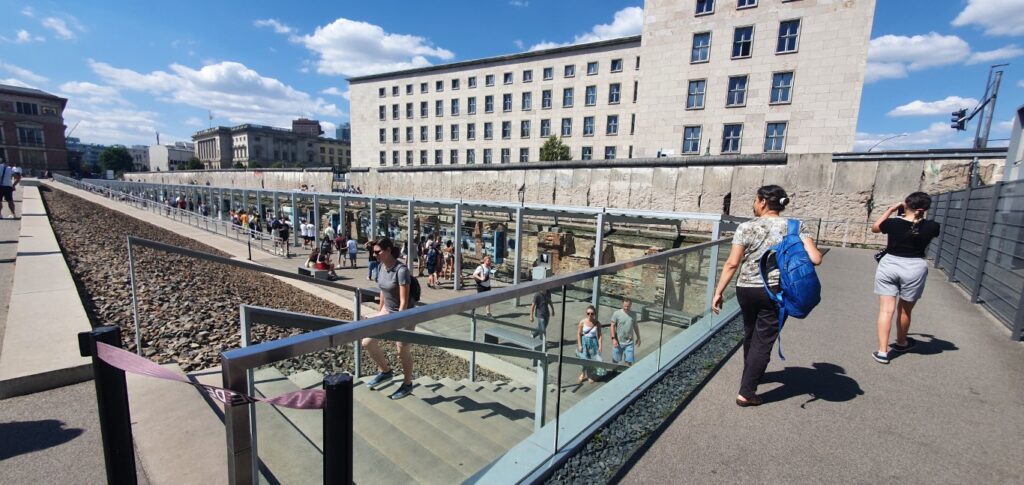
After that we went to the remains of the Berlin wall, which also housed what used to be the Gestapo headquarters. This is now a museum dedicated to the story of the Holocaust.
We finished at Checkpoint Charlie (as in Checkpoint C) and our guide talked about the importance of remembering, and of grappling with such a complicated history.
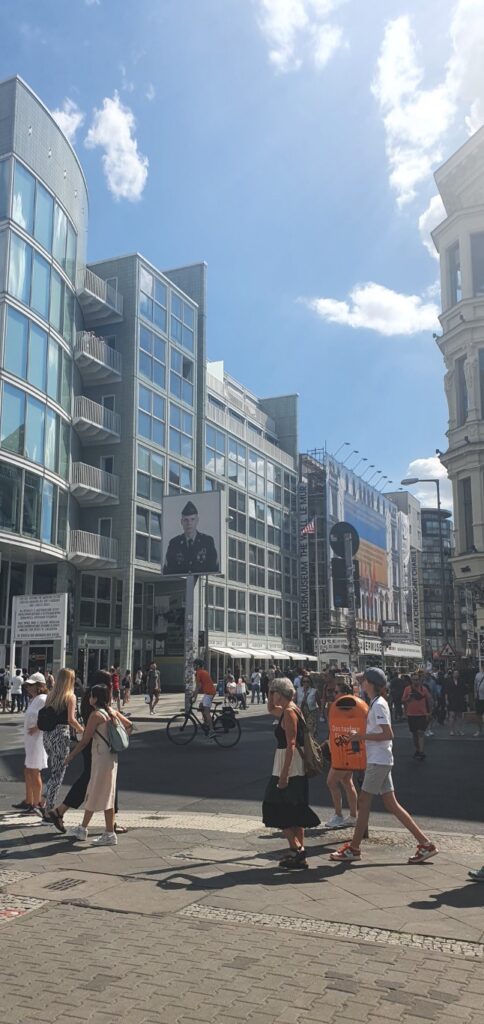
It is always interesting in trying to explain German history, where one starts from. I think most people’s question is ‘how could this possibly have happened?’ Economic circumstances such as the Great Depression with hyperinflation led to people wheeling their life savings in wheelbarrows to buy a loaf of bread. Economic hardship has a way of breaking down the social contract. Economic hardship has underpinned nearly every single revolution in history. When the peasants get to the stage where they can no longer afford the basic necessities of life, then heads will roll, as the French aristocracy found out.
(I’d say we’re due a revolution soon as the ‘haves’ seem to be forgetting this lesson rapidly.)
Economic hardship created by the Treaty of Versailles and the punitive measures inflicted upon Germany after the first world war created the economic difficulty needed to scapegoat the Jews and other minority groups for the difficulties felt by those struggling financially in Germany.
Also I didn’t realise that Germany was such a young country. Much like Italy, Germany used to be a conglomeration of separate kingdoms, municipalities and duchees, ruled over by various different nobles and royals. They were unified under Otto von Bismark in 1871, and then there was a project to try and create a ‘German’ national identity from a diverse range of peoples who spoke a range of different dialects from Bavaria to Baden-Württemberg to Berlin.
Hitler tapped into this burgeoning patriotism. The president at the time Franz von Papen looked at the two people who were able to step into the role of chancellor in 1932, and Adolf Hitler seemed like the lesser of two evils – we didn’t want Germany to become a communist nation like Russia had after it’s 1917 Revolution, and Adolf Hitler spoke so eloquently about German nationalism and how to create a functional German state so he seemed like a sound option.
Our tour finished with an explanation of how East Berlin and West Berlin had functioned, and how East Berlin had created the wall overnight to avoid the streams of people fleeing from the repressive regime. Initially, the wall was just barbed wire that divided the city in two, then it quickly became concrete, patrolled with towers every 250 metres. There was a no-man’s-land between the East side of only a couple of metres in some places and up to 1.5km in other places.
After the tour concluded, we went to the museum of the Berlin wall and saw how people attempted escape. Because the wall was constructed so quickly, there were people separated permanently by the wall, and some families tried many things to be reunited. There were breathing apparatus to scuba dive across the river, one person created a zip line from one university room on one side, over the wall and into West Berlin. The guard that saw this unfold thought it was so professional, that it must’ve just been an army training exercise and didn’t stop them.
There were others that attached a sail to a kayak, and someone created an underwater motorised propulsion device called an underwater diver tug that meant they could power along underwater, undetected, at speed. This proved so successful, that they patented this, and then sold loads more.
The fall of the Berlin wall was largely a faux pas, with Gunter Schabowski accidentally announcing in a press conference that the wall would come down immediately, now, which there were not actually any plans to do at any point in the immediate future.
The wall stood for 28 years, erected in 1961 and finally coming down in 1989.
Upon the reunification of Berlin, after the fall of the USSR in 1991 (A very nice Christmas present to the rest of the world) there was a lot to reckon with.
The version of history told in East Berlin and East Germany had very much been about how harshly Soviets had been treated in the war, and how terrible it was that the Nazis had targeted communists so much, with concentration camps like Sachsenhausen having memorials as a tribute to the loyal communist comrades lost, with little mention of the other prisoners that died there – political opponents, disabled, homosexuals, Roma, Sinti, Jews and more – each given a different ‘flag’ label on their prison uniform to segregate them within the camp.
The work of the last three decades has been to try and reconcile this very complicated past, and decide what to rebuild, what to destroy, what to remember and what to forget. Every one of those decisions is difficult. Choosing one moment to be honoured means another is forgotten, so the process is inherently fraught.
Friday evening, after a cake break, we toddled home for a nap, then headed to our dinner reservation. We had the apartment complex people book us dinner at a few places, and one of them was a very swanky place called Potz at the Ritz Carlton. Their only menu was a tasting menu starting at €109, so we elected to only have drinks there, and find somewhere else for food.
We ended up at a traditional German restaurant in the Sony Centre courtyard, which HUGE portions sizes. The baked potato was excellent, the medley of sausages decidedly less so. Would not sausage again.
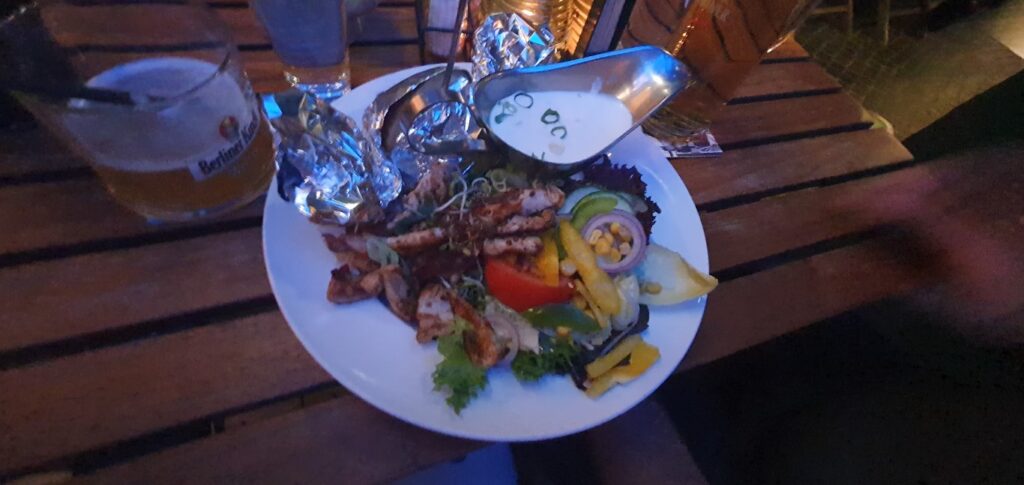
Saturday 13th August
Saturday morning we set out for our concentration camp visit. Not so much that we wanted to go, but felt that it was a requisite part of a visit to Germany, and something that we wanted to bear witness to.
We arrived at 10am, which we thought was really early for our 10:30 am tour, but turns out it started at 10am, so that was just as well. (Joys of booking through third party sites.)
We trained out to the end of the line, and there was an echo of the past even about the mode of transport. If you’ve ever read Elie Wiesel’s Night, you’ll know he vividly describes what it was like to be herded onto the cargo train and be sent out in the dead of night to a concentration camp. Our journey was a distance echo of this treacherous journey.
We walked from the train station through the town of Oranienburg to the concentration camp on the edge of town. Our guide, Jamie (Irish, also from Dublin) explained to us how people sent to the camp would’ve been publicly shamed, and been forced to wear signs around their necks for the various crimes which they were being sent to the camp for. They were paraded through the town and told that they were not part of the German folk, and they were being ‘re-educated’. Whether it was being ‘work-shy’ or speaking out against the Nazis, there were a host of reasons one might find oneself on the wrong side of the law, and being sent to a concentration camp.
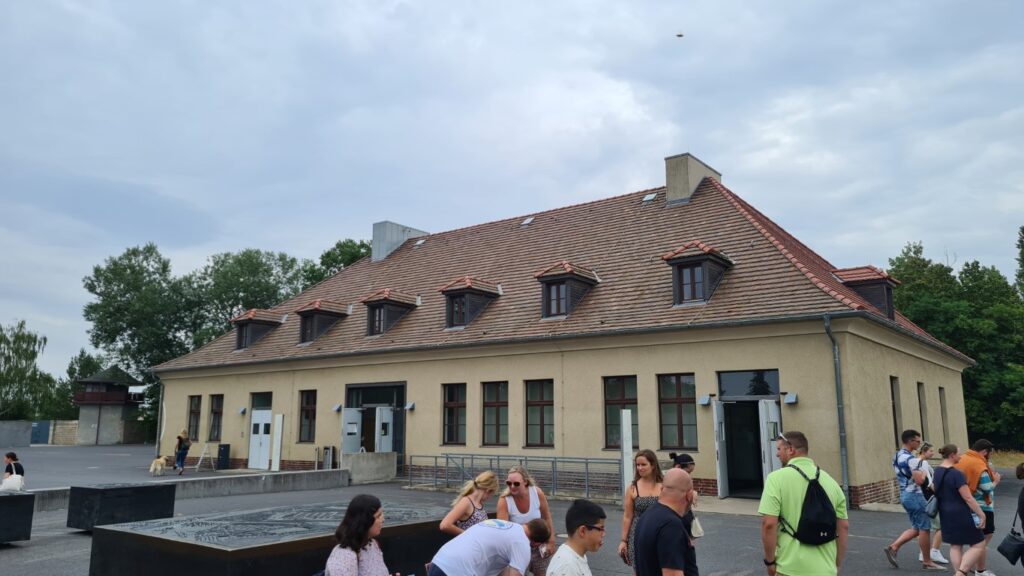
While Sachsenhausen wasn’t a death camp as such – those were based further afield – plenty of people did pass away at those grounds, or were met with firing squads. They did trial a small gas chamber here, but nothing on the scale of Auschwitz or Dachau.
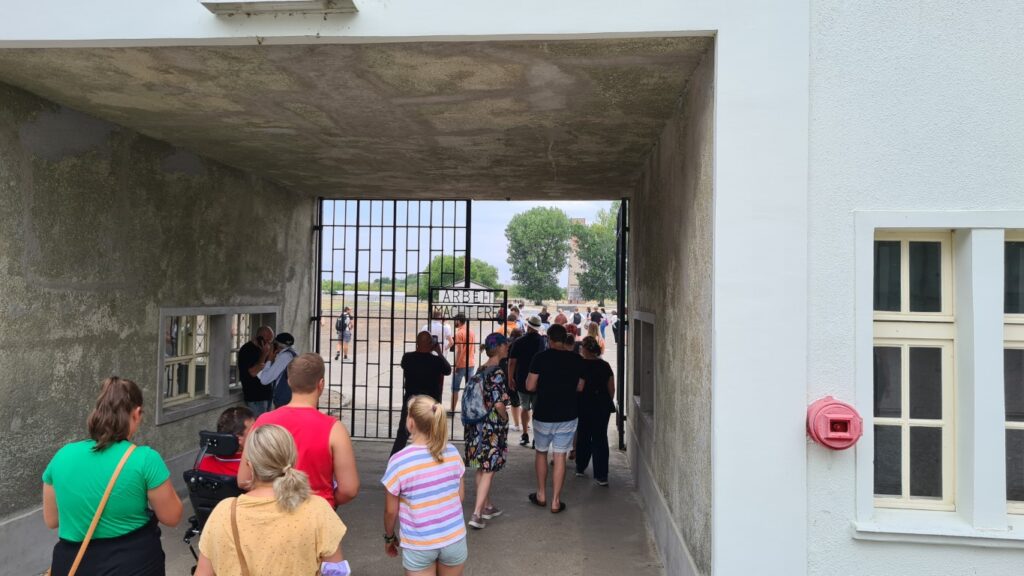

Most of the facilities had been destroyed due to not being particularly well made initially, but we saw a reconstructed bunk, their toilet and washroom facilities, and heard stories about how they were only allowed 30 minutes for everyone to use these facilities, each morning and evening. We also heard stories of how guards assaulted prisoners while they were doing their ablutions, and drowned those who annoyed them in the communal washing fountain in the bathroom.
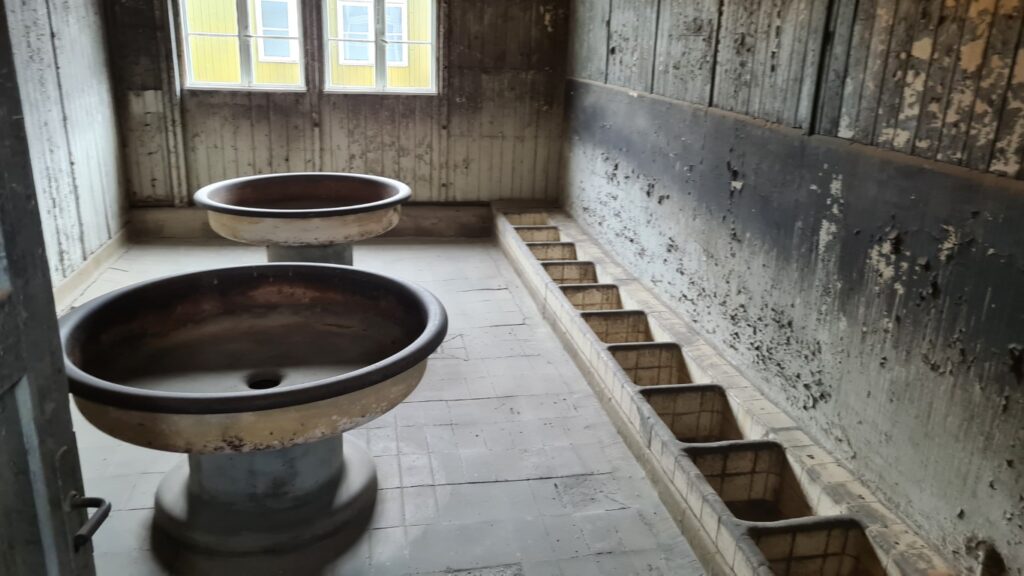
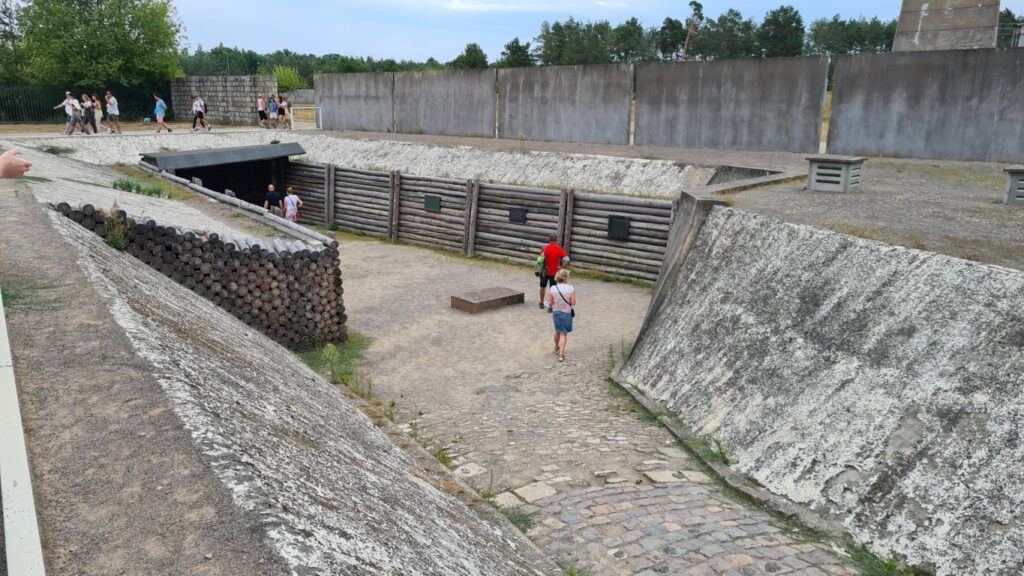
It was a difficult visit to stomach, finishing with Station Z, where bodies were burned – but only when there were enough to bother lighting the furnaces for. The neighbours would often complain about the smell and the ash from the burning of bodies, so they tried to keep it to a minimum.
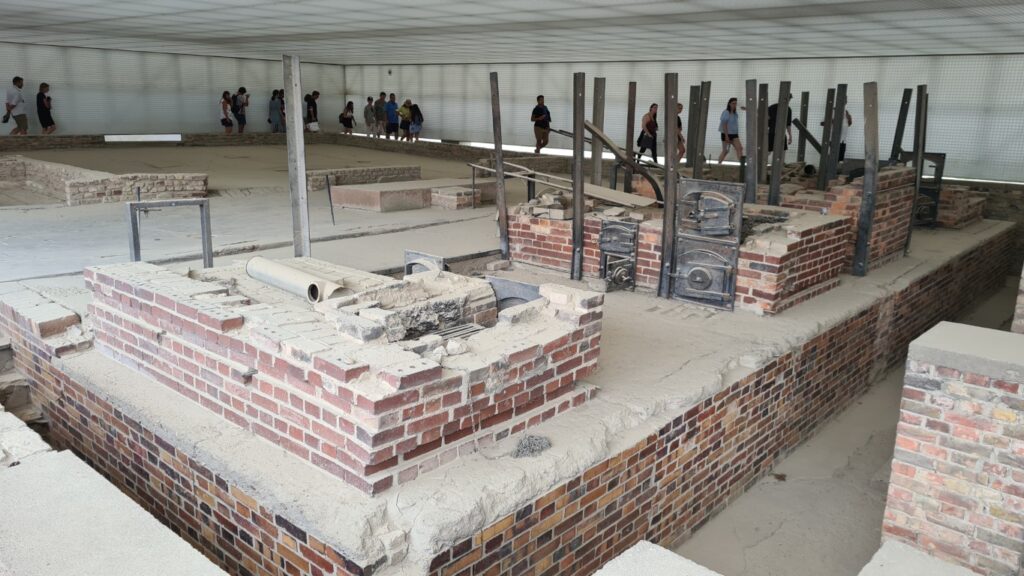
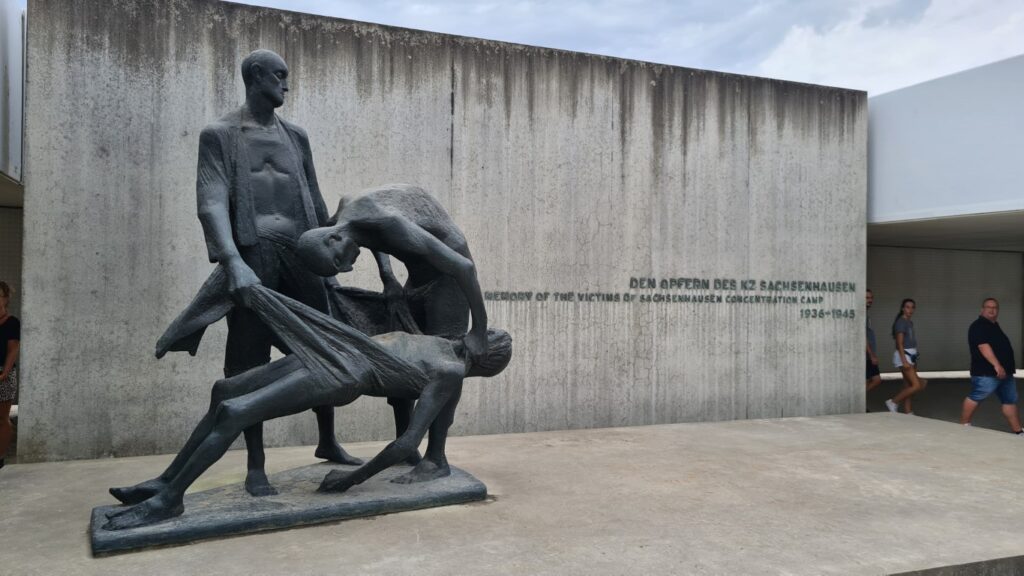
Visiting a concentration camp is physically and emotionally taxing, and so having left at 9:30 am, we returned to Berlin for about 4:30pm, then went and relaxed until 7pm. We were supposed to be going out, but we were all so wrecked that we ordered food in, and ate it whilst watching a movie about the cold war – because we couldn’t get enough of the serious nature of our visit apparently.
I also had a writing competition that started at 6am Saturday morning and went to 6am Monday morning. 1000 words, and this is the second part to a competition I started earlier in the year, so I snatched a few hours to work on that while the others relaxed.
Sunday 14th August
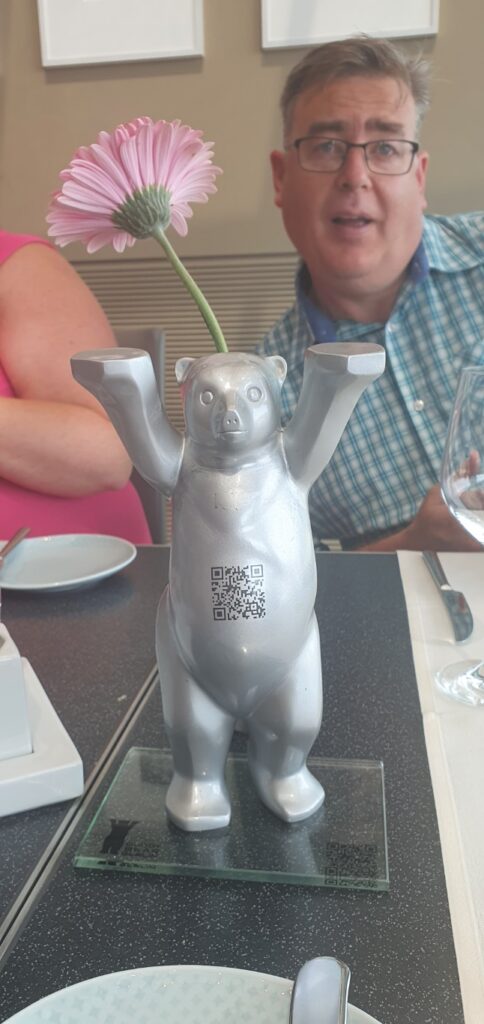
Sunday morning was a very chill morning, me beavering away on my story. We had a lunch reservation at Käfer at the top of the Reichstag building. It was a lovely building, and a great view of Berlin from the top.
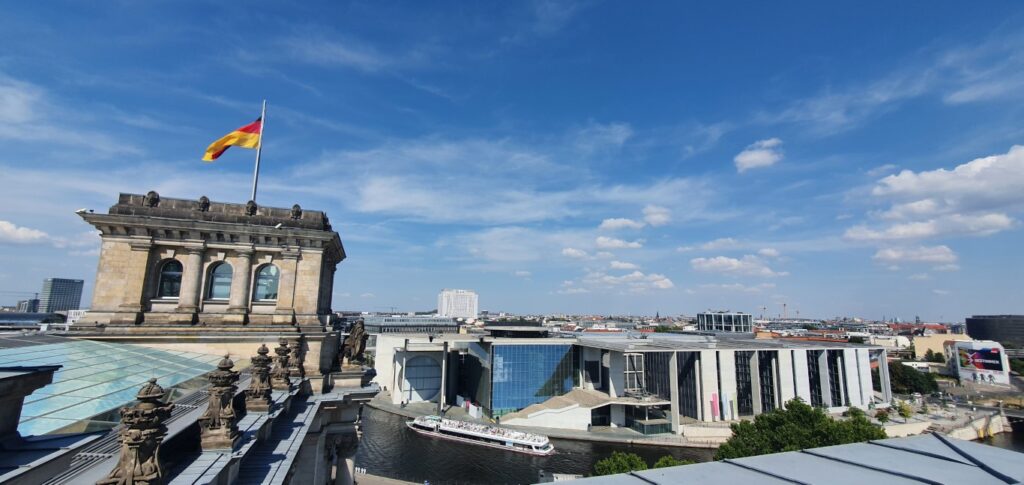
We climbed the dome, had a brief sauna at the top, then continued on to our Museum of Pergamon appointment.

We eventually found the entrance, no thanks to maps, and worked our way through the decidedly un-airconditioned rooms. They were spectacular though! There were recreations of the entrance of Babylon, and a town called Miletus. There was a host of Eastern art from the Ottoman Empire, beautiful tiles, and prayer niches, and loads of other things.

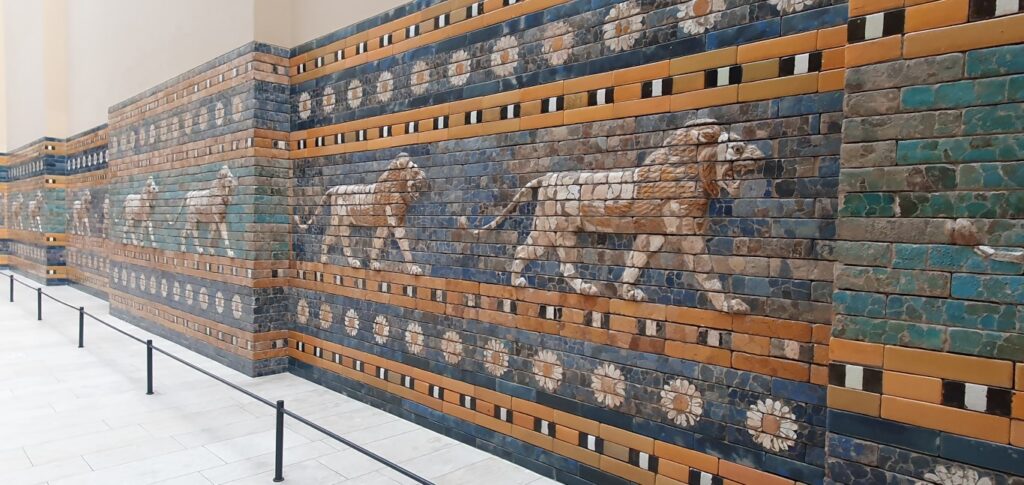
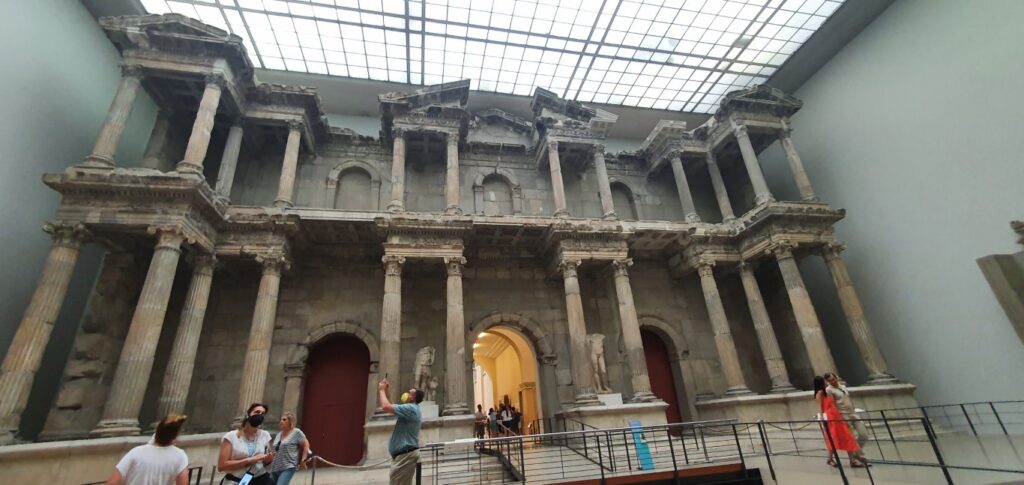
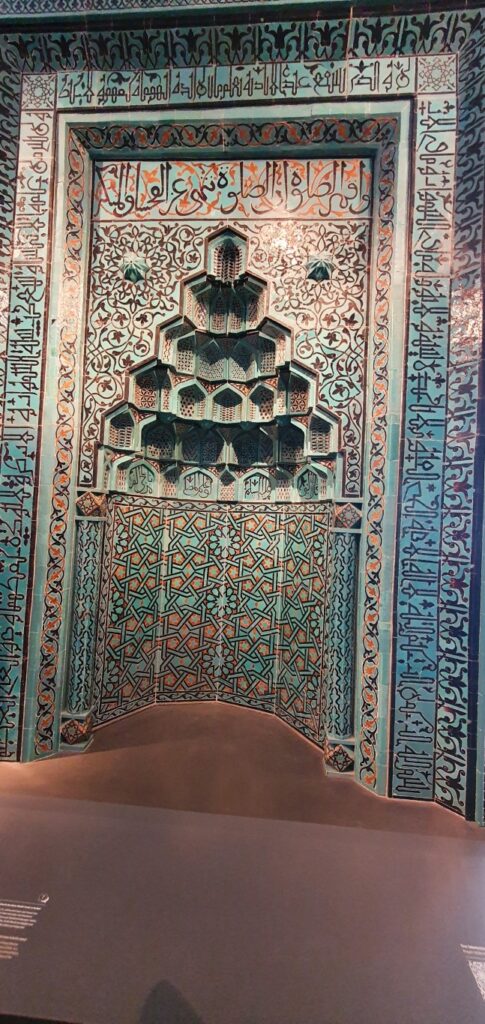
Sunday evening we relaxed with some wine, watched a movie, worked some more on my story, and showered and packed everything up. We departed for the train station about 11pm, ready for our 12:21am train.
Monday 15th August
We got snacks, and waited on the platform from just after midnight, and the train came on time.
We found our seats and settled in. I worked on my story until about 2:30am, then attempted to sleep. Both of us got patchy sleep from 2-6am, shortly before we arrived in Koln. (Cologne).
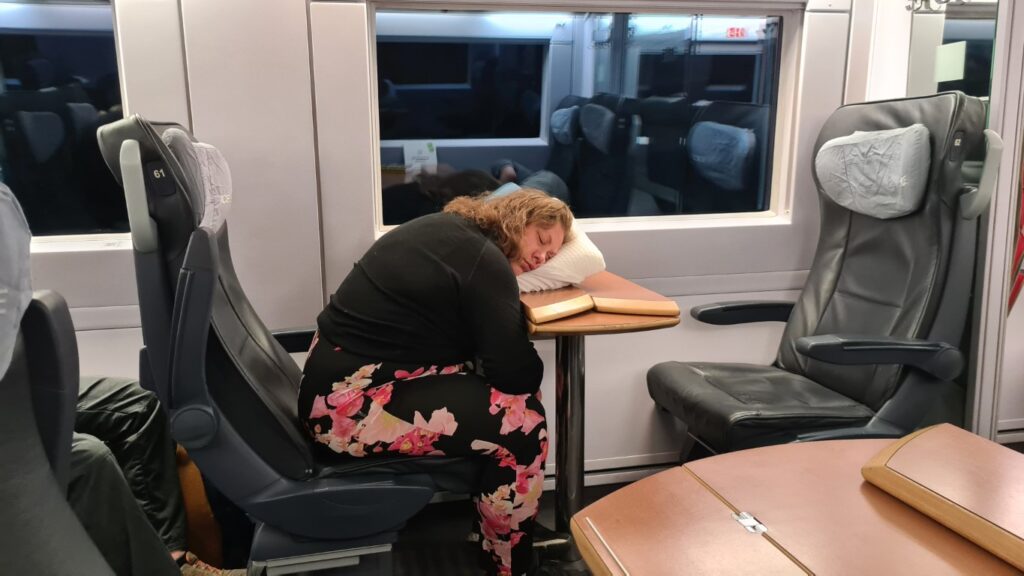
We were supposed to just have a short stopover in Koln, but we went to catch our next train from Koln to Brussels. It appeared to be on schedule, but the train was cancelled. Allegedly there were replacement buses, but these didn’t seem to actually exist as we waited for nearly an hour for them, and they didn’t show.
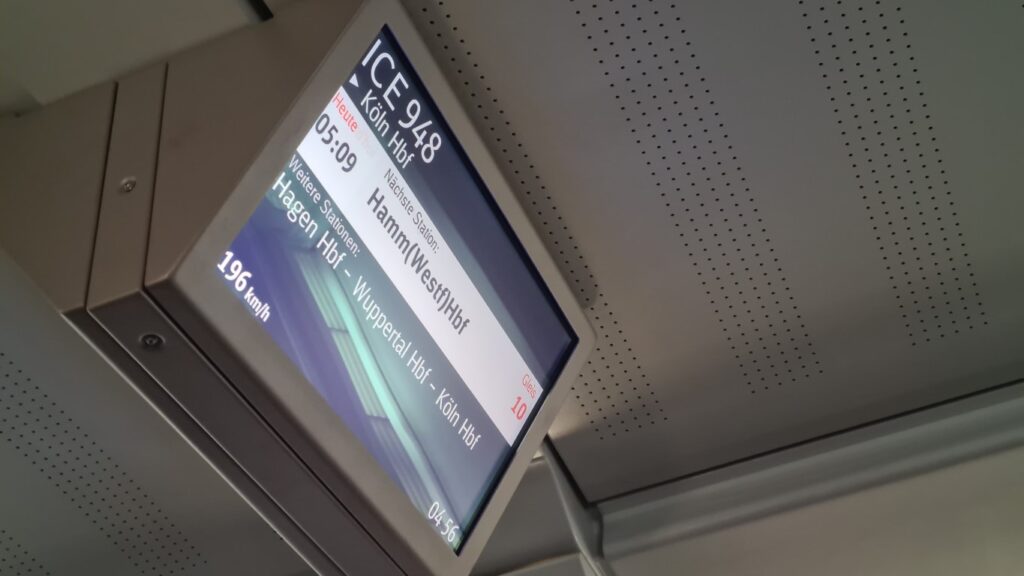
We did eventually get the next train 2 hours later, and arrived in Brussels about midday.
We caught up with our friend Sarah, and mostly napped, ordered food, then slept some more.
Tuesday 16th August
I hunted out a boulangerie in the morning, and acquired croissants to have with our coffee, then we set off for the final legs of our trip.
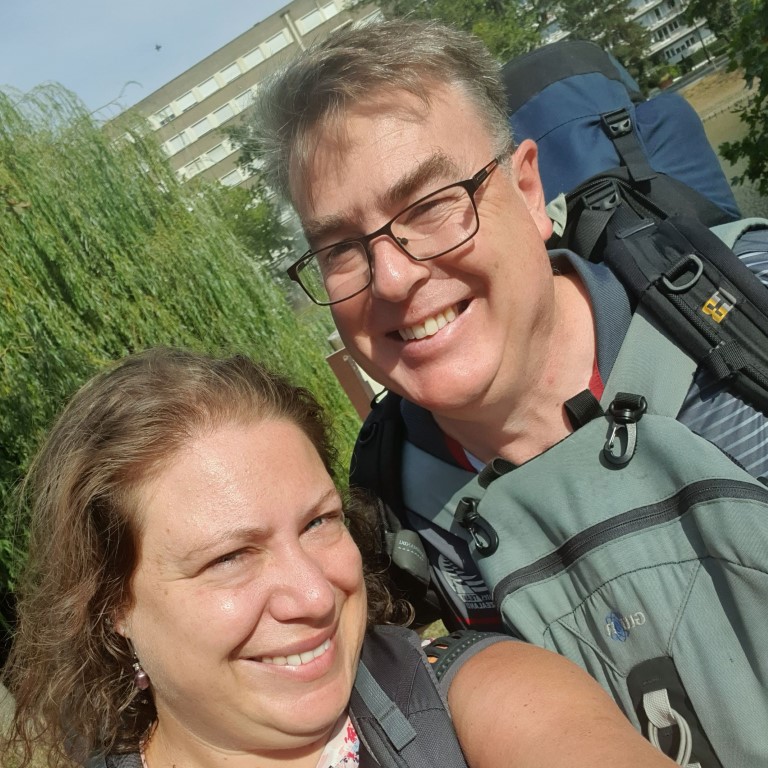
Eurostar from Brussels to London, then a flight from London Dublin.
After 6 full weeks for me, and nearly 2 weeks for Jared, we are headed home. After lost luggage, avoiding strikes, delayed trains, re-jigging train schedules, cancelled trains, seat booking fiascos, and all kind of awesomeness, amazing beaches, brilliant food, unforgettable landscapes, seeing friends, making new friends and making memories, I’m hoping that the last couple of connections will be smooth enough, as we go to Brussels via Cologne, then onto London.

Love this blog! Wondering if I can thread any of your experiences into my current teaching of ‘Night’
Of course – happy to help in any way I can – have more photos as well if that’s helpful?